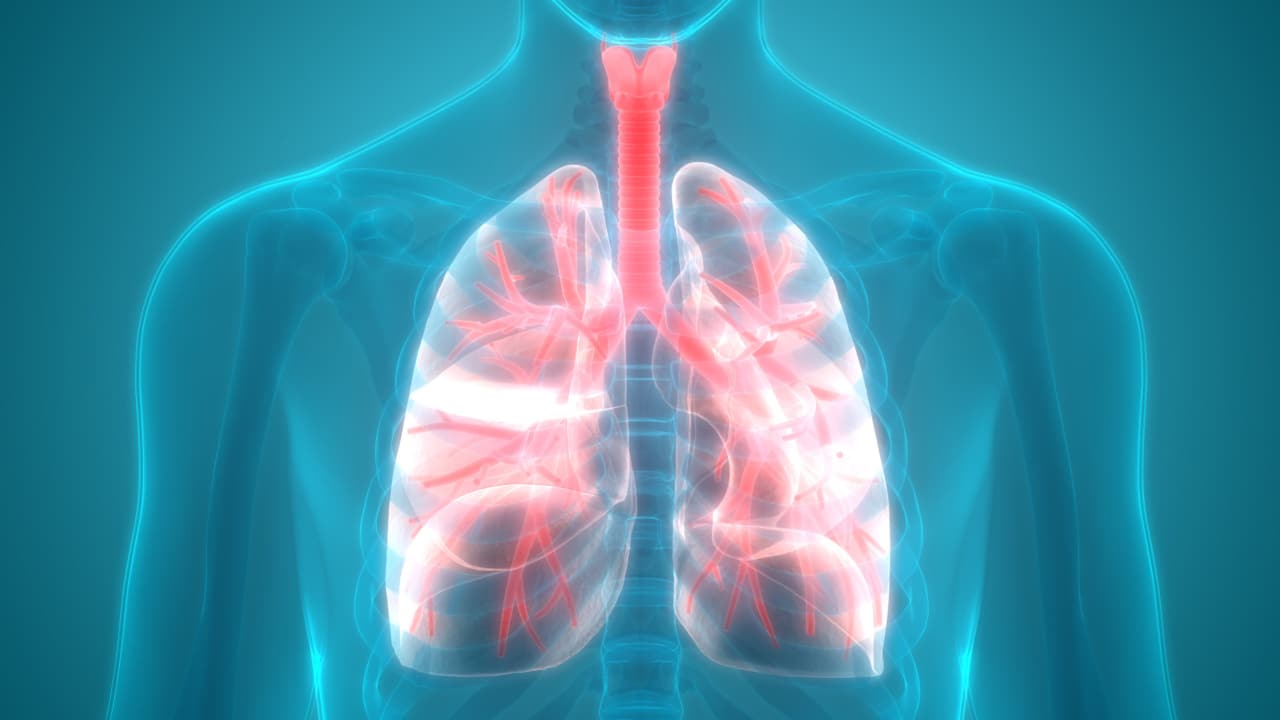Watch More! Unlock the full videos with a FREE trial
Already have an account? Log In
Included In This Lesson
Study Tools
Access More! View the full outline and transcript with a FREE trial
Already have an account? Log In
Example Nursing Diagnosis for Chronic Obstructive Pulmonary Disease (COPD)
- Ineffective Breathing Pattern: COPD often leads to breathing difficulties. This diagnosis addresses respiratory issues.
- Activity Intolerance: Patients with COPD may have limited tolerance for physical activity due to reduced lung function. This diagnosis helps plan appropriate activity levels.
- Risk for Impaired Gas Exchange: COPD can result in inadequate oxygen exchange. This diagnosis reflects the risk of poor oxygenation.
Associated Lessons
Nursing Care Plan (NCP) for Chronic Obstructive Pulmonary Disease (COPD) is mentioned in these lessons
Transcript
So, our subjective data for a patient with a COPD diagnosis would be things like difficulty breathing, You might hear them say they cannot breathe so, difficulty breathing, chest tightness, also something that you might have your patient with COPD tell you. Our objective data is the things that we witnessed and we see in the patient. Maybe we assess and we find that the patient has some wheezing, maybe they're low, O2 Sat, or a low PH and high C02 on their ABG. Um, they could be blue, right? There could be some cyanotic to them, the lips, the fingernails, maybe they can't speak full sentences or they have to really stop to breathe. Um, swelling and edema can happen also with cor pulmonale, which is that right sided heart failure that happens because of the increased pressure within the lungs. So, you might have that, and symptoms of that would be that barrel chest that the patient gets. This barrel chest is typical with COPD and tachycardia happening. So, those are our objective findings.
Now let's take that data and look further with it. So, we're going to analyze, okay, we're going to analyze that data and that's going to help us to diagnose and prioritize. So, what's the problem? So, for my patient, a hypothetical patient that we have, I'm going to say they have low O2 sats. Now remember, a COPD patient typically hangs around 88 and that's okay, that is just their normal. So, let's say for my patient, we'll go that they are around 79% and they have a high amount of CO2. Alright, that's my problem and obviously there’s some breathing difficulty, always because of this. So, what needs to be improved? Well, oxygenation, right? We need to improve the oxygenation for this patient. Unfortunately, COPD is a chronic thing, right? We're not going to be able to completely fix that like we can fix other things. So, it's just helping to fix what we can, the symptoms of it. So what's our priority? Our priority for this patient is going to oxygenate them, right? Give oxygen. Now, we don't want to ever give too much to a COPD patient because of the way their receptors are, but a little bit of oxygen, like two liters, no more than that can help this patient since they are 79%.
Alright, so now you are going to ask your how questions and that's going to help you to plan, implement and evaluate. So, how do we know it was a problem? This is where you will link whatever data that you have found for your patient when you are clinical, you're going to link it. So, all your assessment findings, your subjective and objective data, link it together and that's how you knew what was a problem. So for me, my hypothetical patient, they were, I noticed having trouble breathing, or they told me that, and my assessment findings, which were, a low O2 sat and maybe some wheezing.
Alright, now, how am I going to address it? So, I could give my patient medication right? So, meds for COPD,breathing treatment, remember things like bronchodilators, we want to do those first before steroids, because we wanna help bronchodilate and then monitor their oxygen saturation. So I'm going to keep monitoring, keep assessing the patient. And how am I going to know it gets better? Well, unfortunately this is chronic. Like I said, right? We're not fixing the COPD, but we are going to know that things are better. Maybe the exacerbation of it isn't as bad because there's less work of breathing.
Maybe my patient stops wheezing, that would be awesome. Right? So, no more wheezing on my assessment. Maybe they can move better. They can talk in complete sentences without having to pause and stop. My grandmother had COPD and she could not finish a sentence. So, our high level nursing concepts for this patient, I'm going to go ahead and do oxygenation. I'm going to comfort and focus also on patient education.
Alright so, we're going to take those concepts and put them into a care plan. So we're going to come up with whatever data is linked to our problem or a priority. We're going to come up with what we can do about it and our why, so why we expect this intervention to help our assessment piece, and then what we expect to see happen. Alright so, first oxygenation… So, my patient, my data, low saturation, remember, I think I said 79% and just, they were having some hypoxia signs, so having trouble breathing or trouble talking without stopping to breathe, things like that.
So, my intervention, I am going to give some oxygen, but remember, no more than two liters, some meds, maybe those bronchodilators to help, especially for wheezing. For the reason why, to improve my oxygen saturation and to bronchodilate. My expected outcomes are that my O2 sats will be within normal limits for this patient. Remember, for a patient with COPD, we're not talking like 9,900, we're talking around 88%. So, that's important for this patient and they'll have more of an ease of breathing, not working as hard to breathe comfortably. So, comfort... My patient was showing me signs and symptoms based on being restless and saying that they just couldn't breathe. So, that is uncomfortable, right? So, what can I do? I can help provide comfort by positioning the patient, right? Sitting them upright helps with that lung expansion. I can give them support. So just offer support, help. No, it's okay. Like take your time, catch your breath, and then try to talk again.
Our rationale... So, this is just going to help them, the reason why it's going to help them feel supported and then hopefully make them more comfortable. My expected outcome is that my client will feel supported and be less restless, right? Hopefully, the positioning will help with that and they'll feel support from the nurse.
Patient education... So, hopefully they don't, but if they smoke, we can talk about some smoking cessation or some data we collected, let's say the patient's smoked, maybe they need some education on medication because they aren't taking them all properly and then, we can give them education about clustering their care. So, the smoking, to fix that, or intervention will be smoking cessation education, we can give med education about how often they can take bronchodilators, what to do with the oxygen, that kind of thing and then, cluster their tasks together. So, that intervention will just be to get them to cluster their tasks. And our why, so the why is that, well we need them to stop smoking, right, to decrease some of these irritants and understand the meds. And then the clustering to our tasks, the rationale is just because they don't expend so much energy. If they cluster things together versus going up and down the steps, doing multiple things, they go to one room, they do everything they need to do before they go on to the next thing. Our expected outcomes. So, we just want them to verbalize and demonstrate them and understand them right? That's going to help show us that they have achieved this outcome.
Alright, let's look at our key points. So, we are going to collect our information when you're doing your care plan, which is your data, and that's going to be your subjective and objective. We are going to analyze information, so diagnose, prioritize, ask how, so that's gonna help us to plan, implement, and evaluate, and then translate. So, just some concise terms and transcribe. So, whatever form you prefer, just get your care plan on paper.
Alright guys, that was it for COPD care plans. Check out all the care plans that we have for you on this course. They're awesome. Now go out and be your best selves today and as always, happy nursing!
View the FULL Transcript
When you start a FREE trial you gain access to the full outline as well as:
- SIMCLEX (NCLEX Simulator)
- 6,500+ Practice NCLEX Questions
- 2,000+ HD Videos
- 300+ Nursing Cheatsheets
“Would suggest to all nursing students . . . Guaranteed to ease the stress!”



